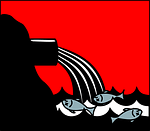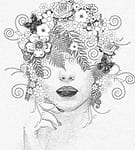
I didn’t really grow up around true nature. I say true nature because although I would always play outside as a child I did grow up in the city. The nature I was exposed to were my grandfathers flowers and grape vines in the backyard (which was cement), any grass on the park or the small sections on the sidewalk. I wasn’t able to have a “real” backyard up until i was about eight or nine, real meaning I actually had some grass. I will say that although I didn’t have to what seems to be a luxury of having a green backyard I was exposed to potting and planting with the pots and strip of dirt on the perimeter we had around the grapevine. As a child I could not stand outdoors in the summer because I was petrified of bees. No, I had never been stung by one either, just very afraid of bees and most bugs in general besides butterflies. My parents told me one summer I refused to go outside most days, just because I was afraid of bugs/bees. However in second grade the knowledge being taught of the flowers feeding the bees and they made honey out of it was super cool to me. This may all sound like senseless information, but I’m telling you this so you can get a background of how nature has impacted me over time… which I will bring up throughout the rest of this.
When I first saw the Kingslover I had an interesting feeling in my chest, the photo honestly felt breathtaking. It was so beautiful, bright and just so pure. Growing up and living in the city all of my life I’ve never experienced wild nature, like that, “in the middle of nowhere” nature. It is so fascinating and beautiful what is out there to be admired. Kingsolver really makes it known that a place, is the wild, that we need to wild… even if we’re there alone. He mentioned not speaking for periods of time and just being in the presence of himself and the nature surrounding him. Then, it dawned on me. We live in an era where social media is a way of basically knowing everyone’s business if they post enough about it, and that you “need” to be social, or else you’re considered antisocial or a homebody. I personally enjoy my own company maybe a little too much, so I thought and then I read that. It made me feel as though there isn’t anything wrong with being alone and not wanting to speak sometimes. I feel like we as a generation are so caught up in having easy access to communicate with someone at any given moment. Technology, marketing and over population has really gotten in the way which leads me to discuss Williams piece.
“Place + people = politics” and just like that it made sense. If you go into the middle of the woods or wherever you may choose where there is not any pavement or a chained business politics only have something to do with it if they can place a building on top of it and if there’s enough people willing to spend their money on it. These days there are more people pitching the next business demolition rather than thinking of other ways to preserve land. Everyone wants their own piece of land, no one is willing to share. I would much rather see highrises and skyscrapers than a bunch of single level buildings taking up space. Williams makes it known that everyone is fighting for a piece or a right to own land or water so they can do as they please with it, not so they can help it prosper. Which leads me back to my last thought, although America is a pretty modernized country there are some areas that aren’t city like, however some Americans couldn’t care less about the amount of land or trees being taken if their favorite restaurant or place to shop or hangout is going to be built there. Unfortunately all multi billion dollar companies have almost all of the power and the money to tear down and build up wherever they may please, because unfortunately the state and city want a way to create more money and foot traffic. As I have gotten older I have become more aware of my surroundings and how sad and blah they may be, because the green is so minimal, and I just live in it. 
Bell Hooks piece, Touching the Earth, the title instantly made me think of a method called grounding. If you do not know what grounding is, you pretty much expose your bareskin/ bare feet to nature outside (grass/dirt) in order to feel more rooted. While reading all of these pieces I’ve made the connection and the realization that nature is indeed apart of us, even if we don’t realize it which is what Hooks’ reading had transpired to me. Reading all of these pieces really got my mind going, and then I thought we really do need nature. Even if we’ve moved far away from it or don’t have that much surrounding us. Why is it that when we aren’t feeling well we instantly feel better, even if it’s just a little as soon as we step outside and get a breath of fresh air? All of the writers define place in connection to the need and rooting of nature within us. I appreciated reading all of these articles and they have opened my mind up to the bigger picture.
Annotations
Excerpt from Barabar Kingolver’s SMALL WONDER. Kingolver really set the scene with her words and with my imagination it felt like I had watched a small clip after. Her writing assisted me in writing this peace because of all of the realizations that had come about just from being in the presence of nature and really taking it all in.
Bell Hooks, Touching the Earth. Bell hooks had mentioned many things besides nature, but the connection between blacks and nature. Although rooted throguh slavery blacks appreciated nature and had come from natur although their times spent there weren’t always at best. Nature is needed through all times the good, bad and the ugly.
Terry Tempest Williams, Home Work (From “Red”). Reminded all that politics have no tie to nature at all unless they are destroying it and building on top of it, and that there is a disconnection between nature, the need for business and humans.



